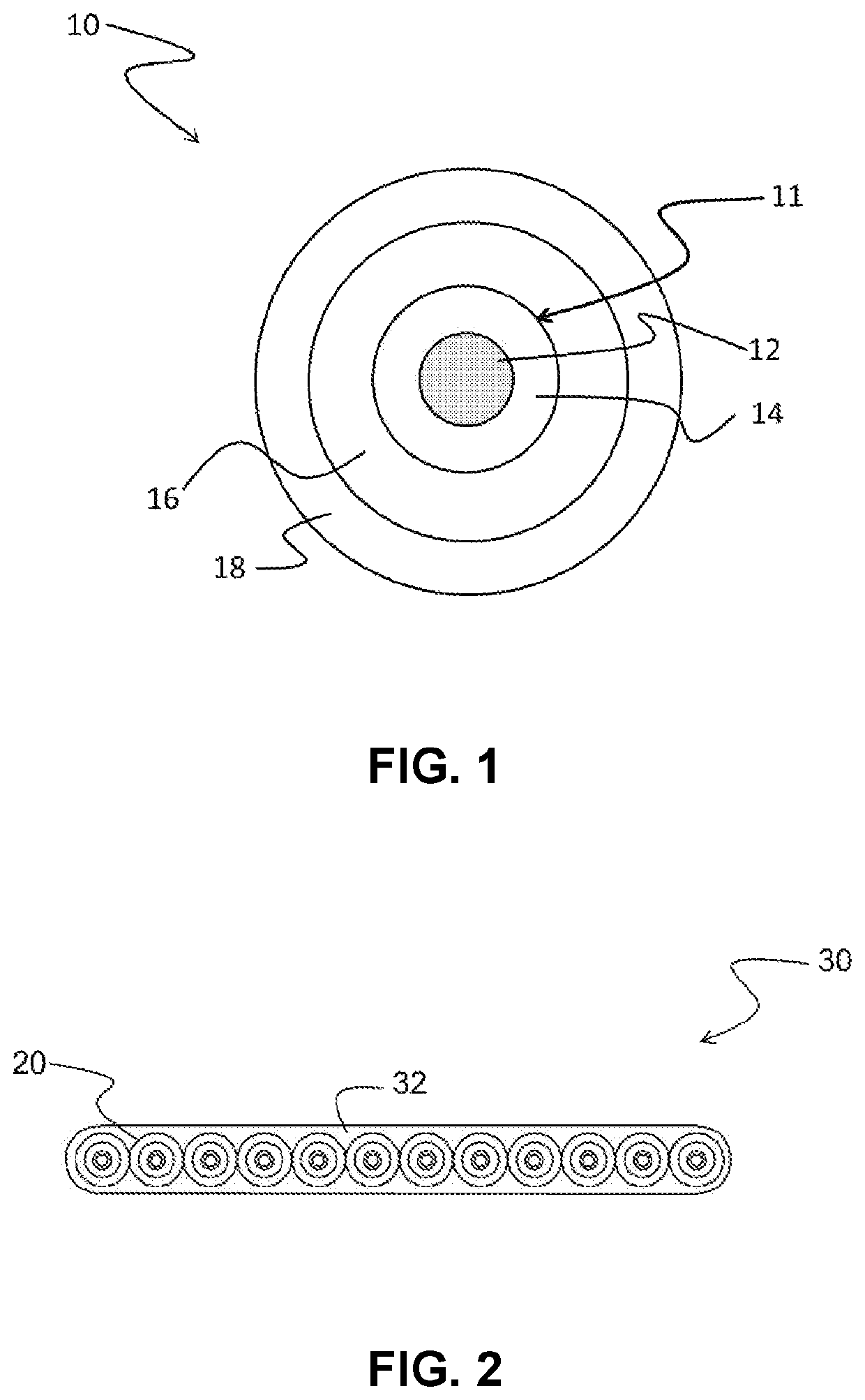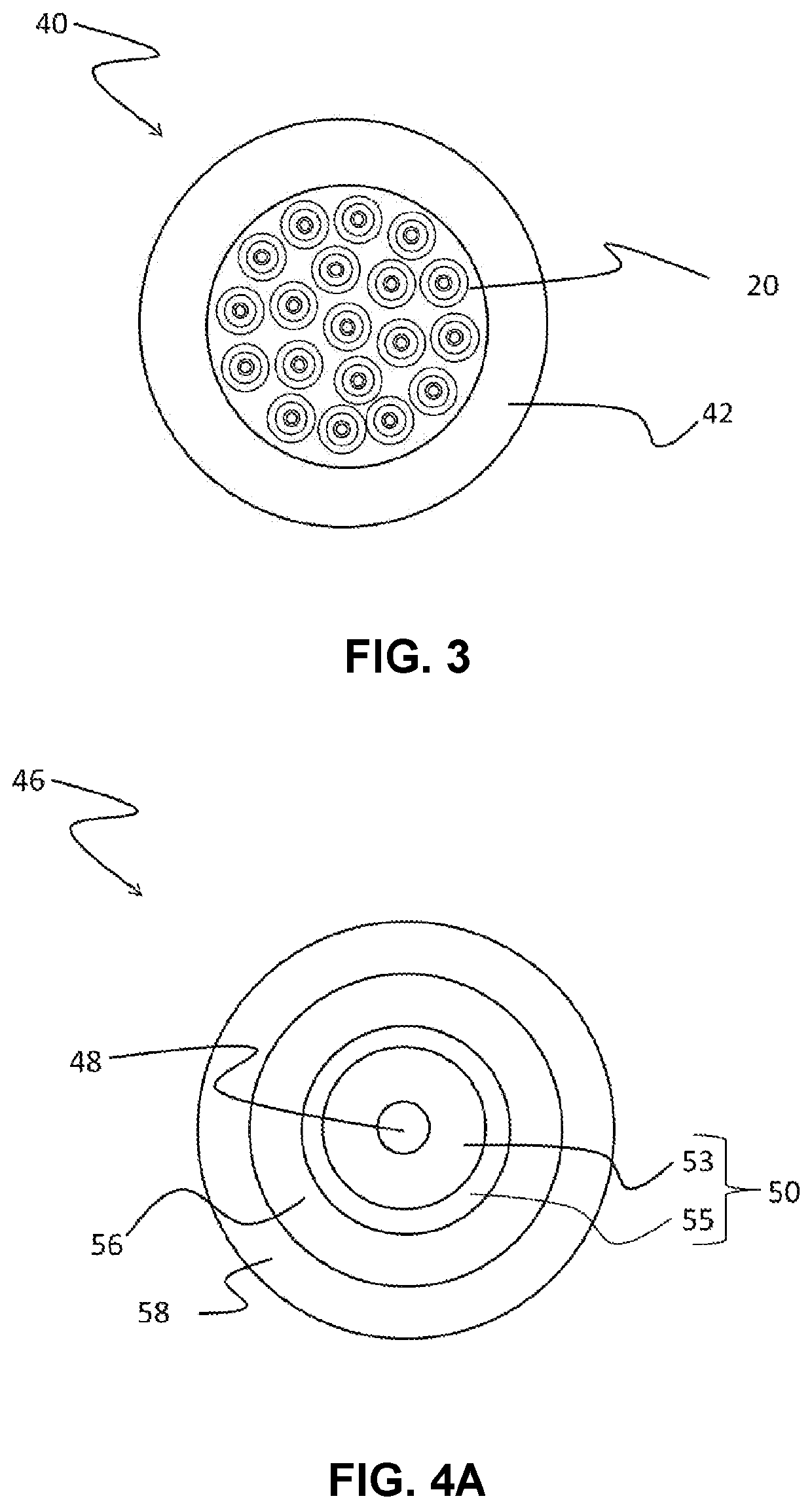Optical fiber with low macrobend loss at large bend diameter
a technology of optical fibers and macrobends, applied in the field of optical fibers and cables, can solve the problems of microbend loss, attenuation loss and bending loss, signal loss, etc., and achieve the effect of minimizing macrobend loss, minimizing macrobend loss, and low macrobend loss
- Summary
- Abstract
- Description
- Claims
- Application Information
AI Technical Summary
Benefits of technology
Problems solved by technology
Method used
Image
Examples
examples
[0143]The following examples illustrate optical fibers having cladding regions with a trench cladding region configured to minimize macrobend losses at bend diameters greater than 40 mm. The trench cladding region of the illustrative optical fibers have a relative refractive index Δ3 and / or a thickness r3−r1 (in embodiments without an offset cladding region) or r3−r2 (in embodiments with an offset cladding region) configured to provide a trench volume conducive to minimizing macrobend losses at bend diameters greater than 40 mm.
[0144]Macrobending.
[0145]Macrobending loss was determined using the mandrel wrap test specified in the standard TIA-455-62: FOTP-62 IEC-60793-1-47 Optical Fibres—Part 1-47: Measurement Methods and Test Procedures—Macrobending Loss, by Telecommunications Industry Association (TIA). In the mandrel wrap test, the fiber is wrapped one or more times around a smooth cylindrical mandrel having a specified diameter, and the increase in attenuation at a specified wave...
PUM
 Login to View More
Login to View More Abstract
Description
Claims
Application Information
 Login to View More
Login to View More - R&D Engineer
- R&D Manager
- IP Professional
- Industry Leading Data Capabilities
- Powerful AI technology
- Patent DNA Extraction
Browse by: Latest US Patents, China's latest patents, Technical Efficacy Thesaurus, Application Domain, Technology Topic, Popular Technical Reports.
© 2024 PatSnap. All rights reserved.Legal|Privacy policy|Modern Slavery Act Transparency Statement|Sitemap|About US| Contact US: help@patsnap.com










